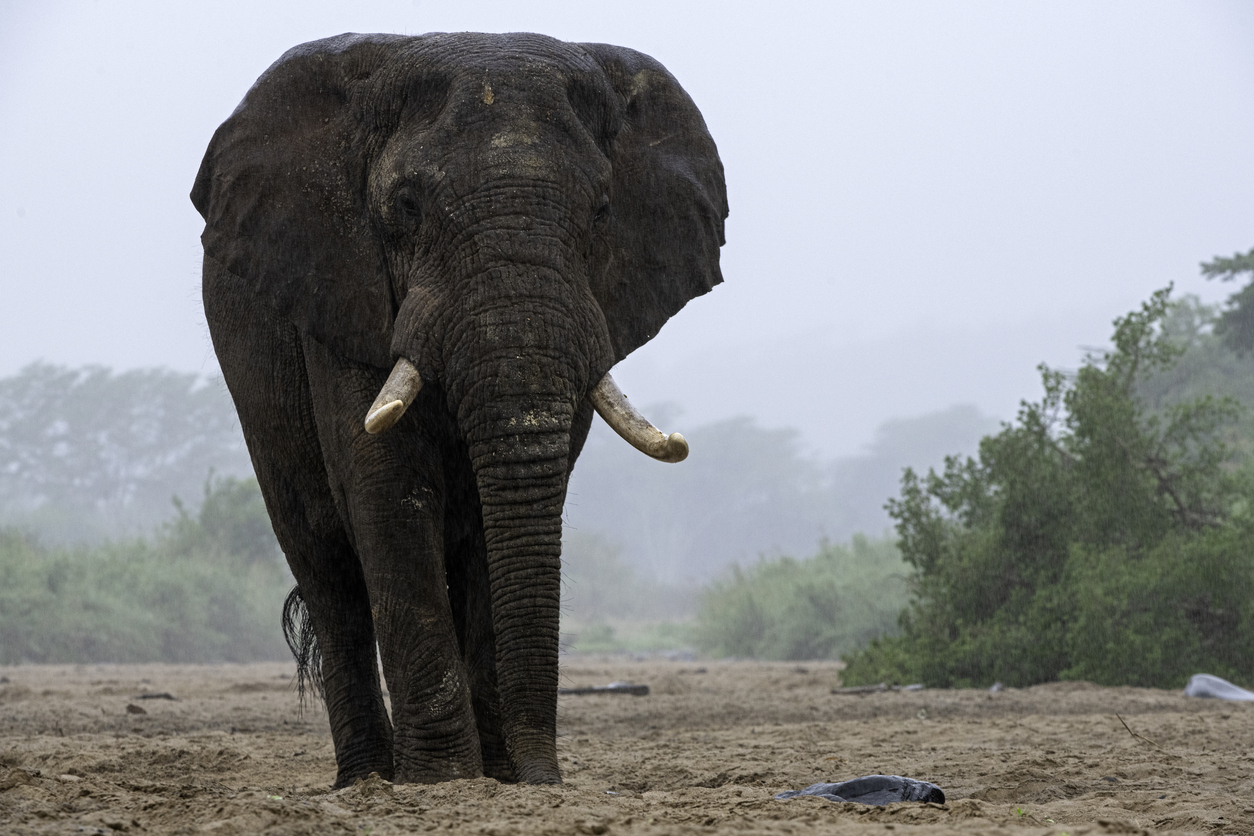
‘Super tusker’ elephant bull killed by Texas trophy hunter in Tanzania
Another “super tusker” elephant bull, from the Amboseli elephant population, has been shot and killed in the Enduimet Wildlife Management Area in Tanzania.

It has been reported that another “super tusker” elephant bull, from the Amboseli elephant population, has been shot and killed in the Enduimet Wildlife Management Area in Tanzania.
The killing took place during a hunting expedition operated by Kilombero North Safaris and allegedly involved a prominent American trophy hunter from Texas.
A statement revealed that ”as of 10 March, a further three licenses are said to have been granted raising alarm and putting the integrity of the Amboseli elephant population in jeopardy”.
This is reportedly the third “super tusker” gunned down near the Tanzanian-Kenyan border within the past six months.
“Super tuskers,” also known as “hundred-pounder” elephants, are male elephants with at least one tusk weighing 100 pounds (45kg).
It is believed that there are as few as 50 left in Africa.
They are critically important for stability in elephant societies and their habitats and ecosystems.
Dr Audrey Delsink, elephant behaviour expert and wildlife director for Humane Society International/Africa, says, “It is beyond comprehension that yet another of Africa’s iconic ‘super tuskers’ has fallen victim to the relentless pursuit of trophy hunters. The intrinsic value that these bulls bring to elephant society through their genetics, as repositories of social knowledge and as keystones of the environment, is irreplaceable. Mature bulls are crucial influencers within the population, holding significant importance for the future of younger males.”
“It is a myth that they are expendable as they approach 40+ years of age. This is not the end of their breeding lives but rather when they are at their highest reproductive success, and they should not be senselessly cut down in their prime. The killing of these iconic animals isn’t just a biological travesty but a moral tragedy and a stain on humanity’s conscience,” Delsink explained.
ElephantVoices, Big Life Foundation and the Amboseli Trust for Elephants, released a statement appealing for “an end to elephant trophy hunting in the Enduimet Area of Tanzania”.
“The Amboseli population includes adult males with some of the largest tusks on the continent due to the particular genetic makeup of these elephants,” the statement reads. “Approximately 30 adult male elephants, over the age of 25 years, use the Enduimet area and beyond in Tanzania as part of their home range. For half a century Enduimet has been a favourite area for a particular set of adult males.”
Elephants are listed under Appendix II of the Convention on Migratory Species, to which both Kenya and Tanzania are parties. The listing encourages collaboration between countries to achieve conservation and management targets for listed species. Since 1995 a moratorium on trophy hunting of this cross-border elephant population between Kenya and Tanzania was agreed between the nations. After nearly 30 years, this moratorium was shattered when two “super tuskers” were killed south of the border in Tanzania, prior to this third killing.
ELEPHANT BULLS ACT AS ROLE MODELS FOR YOUNGER MALES
Studies have found that with age, male elephants dedicate more of their energy toward reproducing. Mature bull elephants like these “super tuskers” will travel twice as fast and three times as far when they are in musth – the periodic state of intensive testosterone-fuelled sexual activity.
Thus, the “conscious selection” of older “surplus” males being targeted by hunters has detrimental effects on the wider elephant society and can lead to a population collapse or long-lasting negative population changes. The biased removal of these older Amboseli bulls through trophy hunting poses a massive threat to these migratory animals.
Mature elephant bulls also act as role models for younger males. The killing of dominant elephant bulls results in the loss of vital social knowledge and experience from which these younger animals learn. Without leadership, the young bulls may navigate into risky environments and become more aggressive, resulting in physical interactions and associated injuries, and even increased human-wildlife conflict.
Dr Joyce Poole, co-founder and Scientific Director of ElephantVoices, says, “Fifty years of research on Amboseli’s known individuals has shown that males between 35 and 55 years of age are the primary breeders. Hunters who claim that older males are “dead wood” are just plain ignorant of the science. Males who are given the chance to live to an old age produce a disproportionate number of offspring, passing their genes to the next generation. By killing large tusked males, hunters are damaging elephant society, negatively impacting Amboseli’s rare gene pool for large tusks and taking a toll on its future tourism potential.”
After a hunt, it is common for parts of the elephant to be taken and claimed as trophies. It is alleged that in this instance, the elephant’s carcass was intentionally destroyed through burning, to hide the travesty of making this bull yet another statistic in the ever-declining, already fragile “super tusker” elephant population.
Meanwhile, a field ranger was trampled and killed by an elephant at the Gondwana Private Game Reserve in the Western Cape over the weekend.
